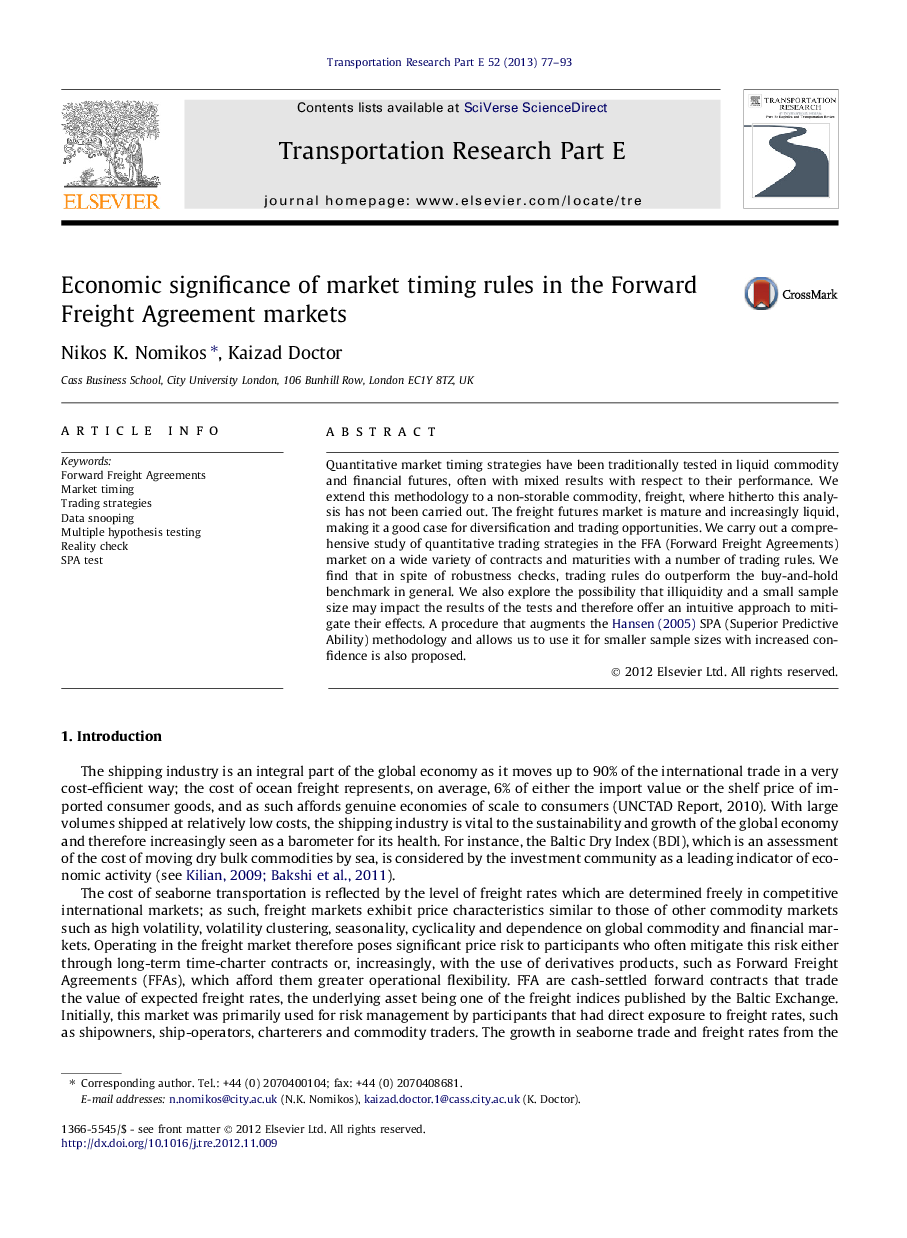| Article ID | Journal | Published Year | Pages | File Type |
|---|---|---|---|---|
| 1023482 | Transportation Research Part E: Logistics and Transportation Review | 2013 | 17 Pages |
Quantitative market timing strategies have been traditionally tested in liquid commodity and financial futures, often with mixed results with respect to their performance. We extend this methodology to a non-storable commodity, freight, where hitherto this analysis has not been carried out. The freight futures market is mature and increasingly liquid, making it a good case for diversification and trading opportunities. We carry out a comprehensive study of quantitative trading strategies in the FFA (Forward Freight Agreements) market on a wide variety of contracts and maturities with a number of trading rules. We find that in spite of robustness checks, trading rules do outperform the buy-and-hold benchmark in general. We also explore the possibility that illiquidity and a small sample size may impact the results of the tests and therefore offer an intuitive approach to mitigate their effects. A procedure that augments the Hansen (2005) SPA (Superior Predictive Ability) methodology and allows us to use it for smaller sample sizes with increased confidence is also proposed.
► We test 11,548 market timing strategies in the Forward Freight Agreements (FFAs) market. ► Data snooping bias was mitigated using the Superior Predictive Ability (SPA) test. ► We propose an augmentation for the SPA test to allow for small sample bias. ► We find that after robustness checks, trading rules do outperform the benchmark. ► This concurs with the adaptive market hypothesis: inefficiencies exist in younger markets.
